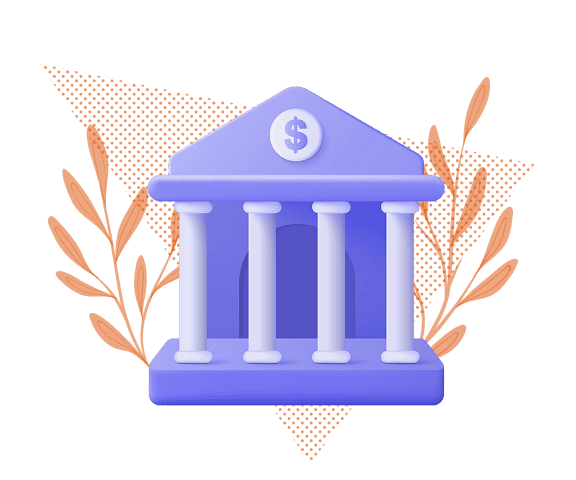What is a Bank Statement?
Updated: 23 Jul 2025
Written bySingSaver Team
Team
The information on this page is for educational and informational purposes only and should not be considered financial or investment advice. While we review and compare financial products to help you find the best options, we do not provide personalised recommendations or investment advisory services. Always do your own research or consult a licensed financial professional before making any financial decisions.
Understanding what a bank statement means
A bank statement is a summary of your account activity over a specific period, usually one month. It’s issued by your bank, either in digital form (known as an eStatement) or as a printed copy.
It details every transaction you’ve made during that period — from deposits and withdrawals to interest earned and bank fees. Think of it as your account’s report card. Aside from helping you track your spending, it also serves as an official document for things like budgeting, applying for a loan, or even submitting a visa application.
Breakdown of a typical bank statement
Your bank statement is structured to give a clear picture of your finances. Here’s what you’ll typically see and where:
-
Account summary: Located at the top, this section shows your account number, account type (e.g. savings, current), and the statement period covered.
-
Opening and closing balances: These show your account balance at the start and end of the statement period — great for seeing how your funds moved over the month.
-
Detailed transactions: This is arguably the most important part of the statement. You’ll find all credits and debits listed as items here — ATM withdrawals, PayNow transfers, GIRO deductions, bill payments, and more. This is where you can locate a specific transaction or deduction.
-
Bank charges and interest: This section outlines any service fees deducted or interest added to your account, especially for savings accounts.
-
Notes or disclaimers: Located at the end, this area may contain updates, reminders, or promotional messages from your bank.
» Learn how to read your credit card statement
When you’ll receive your bank statement
Most Singapore banks issue bank statements monthly by default.
If you're using internet banking or a mobile app like DBS digibank or UOB TMRW, you can easily view and download your eStatements. They're typically available within a few days of the month's end.
If you prefer printed statements, these may still be offered — but often with an additional fee, usually around $2, and a longer mailing time, usually around 3 business days.
Most banks allow you to switch between eStatements and paper statements through your account settings, and in some cases, even change the frequency.
Are bank statements free of charge?
Digital eStatements are generally free and accessible for all account holders.
However, physical statements — especially archived or past ones — may come with a charge. For instance, some banks charge S$2 to S$5 per copy for old printed statements.
If you haven’t already, switching to eStatements can help you avoid these fees while reducing paper clutter. Plus, they’re easier to manage and better for the environment.
Upping your basic financial skills? Learning your way around finance documents is a great place to start.
Other than the bank statement, it’s important to understand the parts of a cheque.
Making good use of your bank statements
You might have seen your parents throwing away their bank statements after reading them, and hence assume they are useless. But it’s not so.
Used wisely, your bank statement is a key part of managing your financial health. Here are three ways to make the most of it:
1. Reconcile your account
Compare each transaction listed with your own records — receipts, budgeting apps, or spreadsheets. Make sure all entries are accurate and none are missing or duplicated. It’s an essential habit for staying on top of your expenses.
2. Correct mistakes
Always scan your statement for unusual or duplicate transactions, wrong amounts, or charges you didn’t authorise. Report anything suspicious to your bank immediately. Most banks allow only a short window (typically 14 days) to raise a dispute.
This not only helps correct errors but also protects you against fraud or identity theft. Many scams have been detected through timely checks on bank statements.
3. Keep records
Bank statements are often required when applying for loans, credit cards, visas, or housing. If you’re self-employed or managing multiple income sources, keeping these documents is even more important.
Download and store your eStatements as PDFs in a secure folder. While banks typically keep records for 6-7 years, having your own backup gives you easy access when needed.
A note on consolidated statements
A consolidated statement is a single document that combines information from multiple accounts under the same bank.
This can include savings accounts, fixed deposits, investments, and even loans. It offers a complete view of your finances in one go, making it easier to track your overall position.
Banks like DBS/POSB offer this service, often by default for customers with multiple products. If you're juggling different accounts, consider opting in — it streamlines your financial review and reduces paperwork.
Achieve your money goals in 2025 with our financial planning guide
Begin your journey to financial freedom today with SingSaver's expert tips and tools to help you stay on track and reach your targets.
About the author
SingSaver Team
At SingSaver, we make personal finance accessible with easy to understand personal finance reads, tools and money hacks that simplify all of life’s financial decisions for you.

